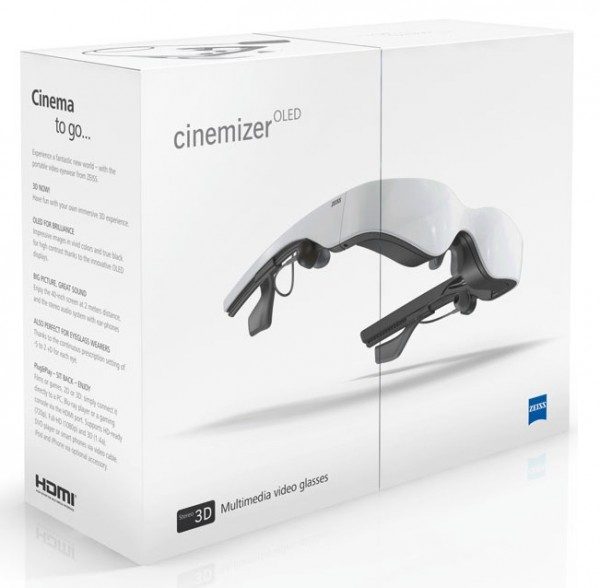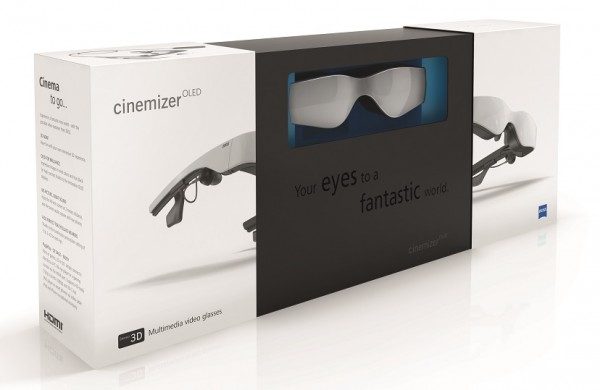Today Carl Zeiss is announcing that the Cinemizer head mounted display is available in the US and Canada for $749. The Carl Zeiss Cinemizer has technically been available for a few months, though it would seem that the company is ramping up production slowly as the initial batch quickly sold out. Previously you couldn’t find the Cinemizer HMD anywhere but Europe. Now Total 3D Solutions has been named as the distributor of the Cinemizer in the US and Canada.
Carl Zeiss Cinemizer Head Mounted Display
At $749, Carl Zeiss has managed to undercut Sony’s HMZ-T1 by $50 (and massively undercut the ridiculously priced HMZ-T2). The price excludes the head tracker which is being developed by Inreal Technologies and should be available in January.
Without the head tracker, the Cinemizer is positioned as a mobile 3D display, much like the Silicon Micro Display ST1080 and Sony HMZ-T1/T2. Once the head tracker is added the Cinemizer can be used as a virtual reality HMD — Inreal Technologies has been using the Cinzmier with prototype head trackers in their virtual reality architecture terminals.
At 120g, the Cinemizer is the lightest of the HMDs that I’m tracking. This puts it slightly ahead of the ST1080 which weighs in at 180g. The Cinemizer uses OLED displays capable of rich colors, like the HMZ-T1/T2, though with a resolution of only 870×500. Immersion is not a strong point for Cinemizer which only offers a 30 degree horizontal field of view.
Compare Head Mounted Displays Here
Total 3D Solutions is offering the Carl Zeiss Cinemizer for $749 and says that there are “very limited supplies!”








